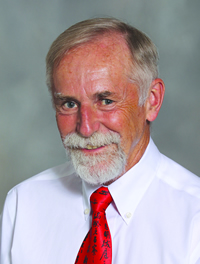An ACR/ARHP combined clinical symposium on Monday morning will come at exercise from two different angles: Treating recreational athletes who go at it little too hard, and encouraging patients with chronic rheumatic diseases to incorporate physical activity into their treatment.

Common Exercise Injuries and How to Avoid Them in Patients starts at 11:00 am today in Salon G. Karl B. Fields, MD, ABFP, CAQ, Director of the Sports Medicine Fellowship Program at Cone Health and a Professor of Family Medicine at the University of North Carolina in Chapel Hill, will take on the first topic, while Thea P.M. Vliet Vlieland, MD, PT, PhD, MBA, Professor in the Department of Orthopaedics, Rehabilitation and Physical Therapy at Leiden University Medical Center in the Netherlands, will cover the second.
“We are really talking about: Can we do things that are clearly going to speed their ability to get back to where they can do what they want to do, not have a lot of residual weakness, and can we do that in a practical, low-cost way?” Dr. Fields said.
He said that the availability of diagnostic ultrasound has facilitated more accurate assessments. It has shown, for instance, that greater trochanteric bursitis is much less common than physicians believed it to be based upon physical examinations.

One area of focus, Dr. Fields said, will be the tendency of weakness in the lateral hip to be a trigger for injuries in the lower extremities, including in the anterior knee and calf.
He said he will also address rotator cuff injuries and the evidence supporting the use of topical nitroglycerine patches and compression sleeves as effective, low-cost options combined with a focused home-exercise program targeting a few weak areas. The patches appear to alter the nitric oxide pathways by regulating an enzyme that promotes greater blood flow, which brings in more platelets and stem cells to of augment the natural healing process.
In addressing exercise for patients with chronic conditions, Dr. Vliet Vlieland said it’s important for an experienced therapist to implement tailor-made exercise prescriptions consisting of routine, planned, and standardized activities, monitored by regular assessments. She said that exercise can be even more beneficial for these patients than for the general public because it can help improve physical functioning, relieve the pain and stiffness that comes with the disorders, and limit comorbid conditions, such as increased cardiovascular risk, that accompany these diseases.
Dr. Vliet Vlieland said that proper regimens must be carefully crafted with a combination of aerobic, strength, flexibility, and neuro-motor exercises, such as balance exercises. The program should generally be performed at least two to five days a week, with aerobic exercises lasting about 20 to 30 minutes and strengthening of large muscle groups, flexibility and joint mobility exercises based upon number of repetitions.
Some conditions, such as ankylosing spondylitis, may actually call for daily flexibility and joint mobility exercises. Dr. Vliet Vlieland said therapists must also be aware of potential barriers for the patients, such as adding more time into managing a condition that can already require burdensome visits to various health professionals. Cost can also be a problem, she said, if insurance does not cover therapy.
Lack of energy is another issue. Convincing someone who already has aches and pains and is tired from their disease that adding strenuous activities to their life is beneficial can also be difficult, said Dr. Vliet Vlieland, so it must be explained that this is a means to an end.
“It is important that you discuss with your patients what is important in their lives, how exercise and being physically active can contribute to those goals,” she said, “and the patient sets personal goals, and then it’s more easy to motivate them.”
CLINICAL PRACTICE TRACK
Common Exercise Injuries and How to Avoid Them in Patients
11:00 am – 12:00 pm Today • Salon G


